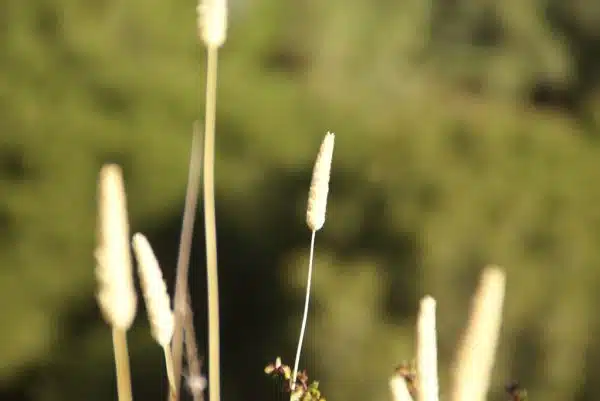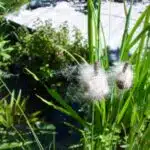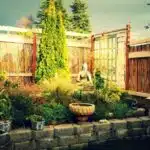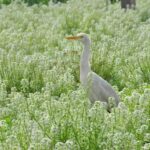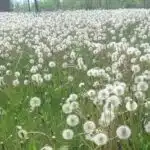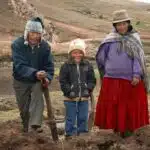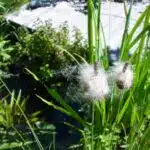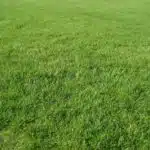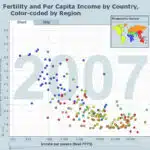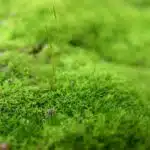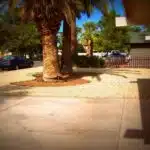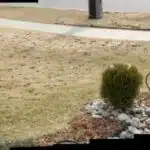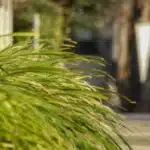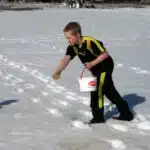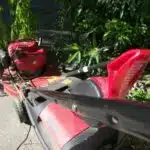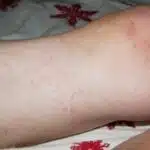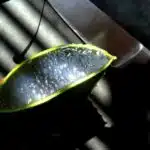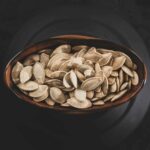As horticulturalists, we understand the importance of using viable grass seed for maintaining a healthy lawn or landscape. However, it is not uncommon for gardeners and homeowners to have leftover seed from previous years and wonder if it is still usable. The viability of old grass seed depends on several factors such as storage conditions, the type of grass, and the age of the seed. In this article, we will explore how long does old grass seed stay viable and what factors affect its longevity.
Grass seeds are living organisms that require specific environmental conditions to germinate successfully. As seeds age, their germination rate decreases due to natural deterioration processes such as moisture loss and genetic mutations. The viability of grass seed can also be affected by external factors such as exposure to light, heat, or humidity during storage. Understanding the lifespan of old grass seed is crucial for gardeners and landscapers to determine whether they should plant it or purchase new seed. In the following sections, we will discuss in detail how long different types of grass seeds remain viable under various storage conditions.
The Importance Of Viable Grass Seed For A Healthy Lawn
As any experienced gardener or homeowner knows, a healthy lawn starts with viable grass seed. The importance of proper storage and maintenance of seed cannot be overstated. Even the highest quality seeds can lose their viability over time if not stored properly. This can result in patchy lawns, thin growth, and increased susceptibility to disease and pests.
One of the best ways to ensure seed viability is through testing at home. While there are professional labs that offer seed testing services, these can be costly and time-consuming. By conducting a simple germination test at home, you can determine if your seeds are still viable and adjust your planting plans accordingly.
Proper storage is key to ensuring seed viability. Seeds should be kept in a cool, dry place away from direct sunlight and moisture. For best results, store seeds in an airtight container such as a jar or plastic bag with the air squeezed out. It’s also important to label containers with the type of seed and date of purchase or harvest to keep track of their age. Understanding seed viability is crucial for maintaining a healthy lawn, so let’s take a closer look at this topic next.
Understanding Seed Viability
Seed viability refers to the ability of seeds to germinate and produce healthy plants. The viability of grass seed depends on various factors such as storage conditions, age, and seed dormancy. Understanding seed dormancy is crucial in determining the longevity of seeds.
Seed dormancy is a natural process that prevents seeds from germinating under unfavorable conditions. Dormant seeds are alive but remain inactive until specific environmental cues trigger them to start growing. Some grass species have hard seed coats that require physical damage or weathering before they can germinate. Others have chemical inhibitors that prevent the embryo from developing until favorable conditions arise.
Seed germination process involves four stages: water absorption, activation of enzymes, respiration, and growth of the embryo. For successful germination, seeds must absorb enough water to activate enzymes that break down stored food reserves to support embryonic growth. Dormant seeds may require pre-treatment methods such as scarification or stratification to break dormancy and initiate germination.
Understanding Seed Viability Bullet Points:
- Seeds can remain viable for years if stored in dry, cool environments.
- High temperatures and moisture can reduce seed viability by promoting mold or fungal growth.
- Some grass species have naturally short-lived seeds due to genetic or biological factors.
- Seeds with high levels of dormancy may require specific pre-treatment methods for successful germination
- Germination tests help determine seed viability by evaluating the percentage of viable seeds in a sample.
Factors That Affect Seed Viability – Environmental conditions such as temperature, moisture, and light exposure can affect seed viability.
Factors That Affect Seed Viability
Seed viability refers to a seed’s ability to germinate and grow into a healthy plant. The length of time that seeds remain viable depends on several factors. One of the most significant factors affecting germination is the age of the seed. As seeds age, their viability decreases, making them less likely to sprout and grow. However, not all seeds have the same lifespan, and some can remain viable for many years.
Another critical factor affecting seed viability is the condition of the soil in which they are planted. Seeds require specific soil conditions to germinate successfully. One essential aspect of soil quality is its pH level. Soil pH affects how well plants can absorb nutrients from the soil, which has a direct impact on seed germination and growth. If soil pH is too acidic or alkaline, it can prevent seeds from sprouting or cause them to die after sprouting.
In addition to age and soil quality, environmental conditions also play a role in seed viability. Factors such as temperature and moisture can affect how long seeds remain viable. Seeds that are exposed to high temperatures or prolonged periods of moisture are more likely to lose their viability quickly. On the other hand, storing seeds in cool, dry conditions can help preserve their viability for longer periods.
The role of storage conditions in maintaining seed viability will be discussed in detail in the subsequent section about proper seed storage techniques. By considering all these factors affecting seed germination – including age, soil pH levels, environmental factors like temperature and moisture – gardeners can ensure their plants get off to a great start by planting only viable seeds that will thrive under optimal growing conditions.
The Role Of Storage Conditions
Storage conditions play a crucial role in maintaining the viability of grass seed. One of the most significant factors that affect seed germination is storage temperature. Grass seeds stored under high temperatures lose their viability much faster than those kept under cooler conditions. This is because high temperatures accelerate seed aging and reduce the ability of seeds to germinate.
The ideal storage temperature for grass seed is between 32°F to 41°F (0°C to 5°C). At this temperature range, the metabolic activity within the seed slows down, and it can remain viable for an extended period. However, if stored at room temperature or higher, the moisture content within the seed decreases rapidly, leading to reduced viability. Therefore, it is essential to store grass seeds under optimal temperature conditions to increase their shelf life and ensure successful germination rates.
In conclusion, proper storage conditions are critical in maintaining the viability of grass seed. In addition to ensuring optimal storage temperature, one should also consider other factors such as moisture loss and humidity levels when storing seeds long-term. The next section will delve further into moisture loss and its impact on seed viability.
Moisture Loss And Seed Viability
Seed viability is an important factor in determining the success of a horticultural project. Different types of seeds have different levels of viability, with some having shorter viability than others. Moisture loss can have a significant effect on the viability of seeds, with high levels of loss resulting in decreased viability. Understanding the effects of moisture loss on seed viability is essential to maximize success in horticultural projects. Preservation methods such as airtight packaging and the addition of desiccants can help to reduce moisture loss and extend the life of seeds. Furthermore, storing seeds at lower temperatures can reduce the rate of moisture loss and help to maintain seed viability.
Types Of Seed Viability
As horticulturists and plant experts, we know that the viability of seed is dependent on several factors, including moisture loss. When it comes to seed dormancy and germination, there are three types of seed viability: orthodox, intermediate, and recalcitrant. Orthodox seeds are able to tolerate low moisture content and can remain viable for years or even decades if stored properly. In contrast, recalcitrant seeds cannot tolerate drying out at all and typically have a short shelf life.
Intermediate seeds fall somewhere in between these two extremes. They can handle some moisture loss but not as much as orthodox seeds. These types of seeds include most vegetable seeds and some tree species like oak trees. Seed dormancy plays a role in the viability of these seeds as well. For example, some species require a cold period before they will germinate, while others need to pass through an animal’s digestive tract to break down the hard outer shell.
In conclusion, understanding the different types of seed viability is crucial when it comes to preserving old grass seed or any other type of seed for future use. By storing them in optimal conditions such as a cool, dry place with low humidity levels, you can extend their lifespan significantly. Additionally, knowing how certain species germinate and what factors affect their dormancy can help increase the chances of successful germination when planting them.
Moisture Loss Effects
To ensure the viability of seeds, it is important to prevent moisture loss. Moisture loss can have a significant impact on seed germination and can reduce the lifespan of seeds. Furthermore, factors such as temperature, humidity levels, and storage conditions can affect how quickly moisture is lost from seeds.
Preventing moisture loss is crucial because once a seed loses too much moisture, it becomes dormant and difficult to germinate. Seed germination inhibitors can also be produced in response to excessive moisture loss. These inhibitors can prevent or delay germination, which can lead to lower yields and decreased crop quality.
To prevent moisture loss and increase seed viability, it is recommended to store seeds in cool, dry conditions with low humidity levels. Proper storage conditions can help extend the lifespan of seeds by slowing down the rate at which they lose moisture. Additionally, regularly checking the moisture content of stored seeds and adjusting storage conditions accordingly can help maintain their viability over time.
Preservation Methods
Moisture loss is a crucial factor that affects seed viability. Without proper storage conditions, seeds can become dormant or produce inhibitors that may reduce their germination rate. To ensure the preservation of seeds, horticulturists and plant experts have developed various seed storage techniques that aim to delay moisture loss and maintain seed viability over time.
Seed storage is a common practice used by horticulturists to preserve the quality and quantity of seeds. The choice of storage method depends on the type of seed, its intended use, and how long it needs to be stored. Some of the most common seed storage methods include refrigeration, freezing, vacuum sealing, and desiccation. Refrigeration and freezing are ideal for long-term storage of seeds; however, they require specific temperatures and humidity levels to prevent moisture buildup during thawing. Vacuum sealing is an effective way to reduce oxygen levels around the seed, which can help prolong its lifespan. Meanwhile, desiccation involves removing all moisture from the seed before storing it in a dry container.
Apart from traditional storage methods, there are also seed revival techniques that can help restore the viability of old or dormant seeds. Scarification involves physically damaging the outer layer of the seed to break dormancy and promote germination. Stratification is another technique where seeds are exposed to cold temperatures for an extended period before planting to simulate winter conditions. Finally, soaking seeds in water or nutrient solution can activate enzymes necessary for germination and provide added nutrients for growth. By using these preservation methods in conjunction with proper storage techniques, horticulturists can prolong the viability of seeds and increase their chances of successful germination when planted.
Genetic Mutations And Seed Viability
Moisture loss is one of the primary factors that affect seed viability. However, genetic mutations can also play a role in the longevity of seeds. Genetic mutations can occur spontaneously or as a result of exposure to environmental factors such as radiation or chemicals. These mutations can lead to changes in the DNA sequence, which may affect the viability and vigor of the seed.
To preserve the genetic integrity of plant species and protect against genetic mutations, seed banks have been established worldwide. Seed banks store seeds in optimal conditions to maintain their viability for long periods of time. These facilities are equipped with advanced technologies that simulate natural environments, including temperature and humidity controls. In addition to preserving wild plant species, seed banks also store varieties of crop plants to ensure food security and prevent loss of agricultural biodiversity.
Despite advances in seed storage techniques, exposure to light can still cause irreversible damage to seeds. Light triggers metabolic processes that consume energy reserves within the seed, leading to reduced viability over time. To minimize this risk, many seed banks store seeds in opaque containers in cool and dark rooms. Additionally, farmers should keep their stored seeds away from direct sunlight and use them within recommended time frames to maximize their potential for successful germination and growth.
In summary, genetic mutations can impact the longevity of seeds along with moisture loss. Seed banks are essential resources for preserving plant diversity and protecting against genetic mutations. Lastly, exposure to light is another factor that affects seed viability which is why they should be stored properly away from any source of light.
The Impact Of Exposure To Light On Seed Viability
Exposure to light can have a significant impact on seed germination, including that of grass seed. When seeds are exposed to light, they begin to produce a hormone called gibberellin, which stimulates the growth of shoots and inhibits root development. This means that seeds that are exposed to light will sprout more quickly but may not develop strong roots, leading to stunted growth or even death.
To ensure the highest possible germination rates for your grass seed, it is important to store it properly. The best way to do this is by keeping it in a cool, dry place away from direct sunlight. Some experts recommend storing grass seed in an airtight container in the refrigerator or freezer. However, it is important to note that if you choose this method, you should allow the seed to come up to room temperature before planting.
In summary, exposure to light can have a significant impact on the viability of grass seed. To ensure optimal germination rates, it is important to store your seed properly and keep it away from direct sunlight. By following these tips and taking proper care of your grass seed, you can help ensure a healthy and vibrant lawn for years to come.
Transition: While exposure to light can have a significant impact on seed germination rates, heat can also play a role in the viability of grass seed over time. Understanding how heat affects seed viability is key in maintaining healthy plants and producing strong yields.
Heat And Seed Viability
Did you know that the average lifespan of grass seed is only about two to three years? This may come as a surprise to many, but it is a crucial factor to consider when planning your lawn. Seed viability and germination rates are affected by several factors, including temperature, humidity, and light conditions. In this section, we will discuss the effects of temperature on seed viability.
- Ideal temperatures for seed germination vary depending on the type of grass. For instance, cool-season grasses such as fescue and bluegrass require soil temperatures between 50-65°F for optimal germination rates. Conversely, warm-season grasses like Bermuda and zoysia thrive in warmer soil temperatures between 70-80°F.
- High temperatures can cause seeds to die prematurely or lose their ability to germinate altogether. When exposed to extreme heat for prolonged periods, seeds may undergo cellular damage that affects their ability to absorb water and nutrients from the soil.
- On the other hand, low temperatures can also be detrimental to seed viability. Seeds that are exposed to frost or freezing temperatures during germination may experience tissue damage or cell death.
- To maximize seed viability and germination rates, it’s essential to plant them during the appropriate season when soil temperatures are ideal for growth.
Understanding the effects of temperature on seed viability is crucial for any lawn enthusiast looking to create an aesthetically pleasing landscape. In the next section, we will explore another vital factor in maintaining healthy lawns: humidity and its effect on seed viability.
Humidity And Seed Viability
Humidity plays a significant role in the viability of grass seed. The ideal storage condition for grass seeds is a dry and cool environment with low humidity levels. When seeds are stored under high humidity, it can lead to the development of fungi or other pathogens, which can reduce germination rates.
The length of time that old grass seed remains viable depends on various factors such as storage conditions, seed quality, and seed type. Generally, grass seed can remain viable for up to three years if stored correctly. However, some seeds may remain viable for longer periods depending on their inherent characteristics.
Seed storage is crucial in preserving the viability of grass seeds. It is essential to store seeds in airtight containers with desiccants such as silica gel packets to absorb any excess moisture present. Proper labeling should also be done to indicate the date of collection and storage conditions. Testing seed viability before planting can help determine whether the seeds will germinate and grow into healthy plants.
How To Test Seed Viability
Measuring Germination Rate: Germination rate is typically measured by counting the number of seeds that have successfully germinated out of the total number of tested seeds.
Testing Seed Storage Conditions: When evaluating seed viability, it is important to consider the storage conditions of the seed, such as temperature, relative humidity, and light exposure.
Calculating Seed Age: According to the USDA, the shelf life of a seed can be estimated by the number of years since the seed was harvested, multiplied by the percent of germination rate.
Measuring Germination Rate
Measuring germination rate is an essential aspect of testing seed viability. It is the process of determining the percentage of seeds that will successfully sprout and emerge from the soil. In horticulture, measuring germination rate is crucial because it indicates the seed’s ability to grow into a plant that can produce fruits or flowers.
Seed aging process affects the viability and germination rate of seeds. As seeds age, their chances of producing healthy plants decrease due to physiological changes such as decreased vigor, lower water content, and increased susceptibility to disease. Measuring germination rate can help determine if a particular batch of old seeds is still viable and worth planting.
One way to measure germination rate is by performing a standard test where a certain number of seeds are placed in a controlled environment with ideal growing conditions for up to two weeks, and then observed for sprouting activity. This method requires careful monitoring and attention to detail throughout the process. By measuring germination rates regularly, horticulturists can evaluate how long their old grass seeds remain viable for future planting purposes.
Testing Seed Storage Conditions
Seed viability research is a crucial aspect of horticulture as it determines the potential success rate of seed germination and plant growth. One factor that affects seed viability is storage conditions. Optimal storage conditions, such as temperature, humidity, and light exposure, can extend seed longevity while improper storage can lead to decreased seed quality and germination rates.
Testing seed storage conditions involves evaluating different environmental factors that affect seed viability. For instance, seeds stored in high humidity environments may develop mold or fungus which can reduce their germination rates. Similarly, seeds exposed to high temperatures or bright light may experience premature aging and death. Therefore, horticulturists conduct experiments to determine the ideal storage conditions that will maximize seed longevity.
By testing seed storage conditions, horticulturists can optimize the preservation of their seeds for future use. This allows them to maintain a supply of high-quality seeds that are capable of producing healthy plants. Additionally, this research benefits farmers and gardeners who rely on these viable seeds for successful crop production. Ultimately, understanding how different environmental factors impact seed viability is vital for ensuring long-term success in the field of horticulture.
Calculating Seed Age
Another crucial aspect of horticulture is testing seed viability. Seed viability research determines the potential success rate of seed germination and plant growth. One factor that affects seed viability is storage conditions. Horticulturists need to conduct experiments to determine the ideal storage conditions that will maximize seed longevity. Calculating seed age is another critical step in testing seed viability.
Calculating methods for determining seed age include both physical and chemical tests. Physical tests involve evaluating the size, color, and weight of the seeds to determine their relative age. Meanwhile, chemical tests measure various metabolic processes within the seeds, such as respiration or enzyme activity levels. These methods help horticulturists understand how different environmental factors impact seed viability.
Seed storage techniques play an essential role in preserving seeds for future use. Understanding how long seeds can remain viable under various storage conditions helps horticulturists determine when it’s time to discard old seeds and replenish their supply with fresher ones. By regularly testing seed viability and calculating seed age, horticulturists can optimize their preservation efforts and ensure a steady supply of high-quality seeds for successful crop production.
How Long Different Types Of Grass Seed Remain Viable
Having discussed the process of testing seed viability in the previous section, it is now important to explore how long different types of grass seed remain viable. The longevity of grass seed is influenced by several factors, including storage techniques, environmental conditions, and genetic makeup. It is essential for gardeners and horticulturalists to understand these factors to maximize seed germination rates.
Different types of grasses have varying lifespans when it comes to seed viability. For instance, cool-season grasses such as Kentucky bluegrass and perennial ryegrass generally stay viable for 2-3 years if stored correctly. On the other hand, warm-season grasses like Bermuda and zoysiagrass have a shorter lifespan and can only remain viable for up to a year. Factors such as temperature, humidity levels, and exposure to light can significantly reduce the shelf life of seeds.
Proper storage techniques play a critical role in preserving seed viability. Seed deterioration can occur due to high temperatures or humidity levels that promote mold or bacterial growth. Storing seeds in a cool, dry place with low humidity levels helps maintain their quality over time. Additionally, using air-tight containers such as sealed bags or glass jars can help prevent moisture absorption and prolong seed longevity. By understanding these factors affecting seed germination and implementing proper storage techniques, gardeners can increase their chances of success when planting old grass seeds.
Annual Grasses and Seed Viability will be discussed further in the subsequent section.
Annual Grasses And Seed Viability
Annual grasses are a type of grass that is planted in the spring and dies in the winter. They are usually used for a variety of ornamental applications, such as lawns, borders, and ground cover. Seed viability is affected by storage conditions, as seed longevity is reduced when exposed to extreme temperatures, moisture, and light. To ensure good seed viability, it is recommended to store grass seed in a cool, dry, and dark place to extend its shelf life.
Types Of Annual Grasses
Annual grasses are a popular choice for homeowners looking to improve their lawns. Compared to perennial grasses, annuals have a shorter life cycle and are less resilient. Annual grasses complete their life cycle within a year, which means they must be replanted annually. In contrast, perennial grasses grow back each year from the same root system. One of the key differences between annuals and perennials is that annuals typically require more maintenance.
Warm season grasses are one type of annual grass that thrives in hot weather conditions. These types of grasses grow best in temperatures above 80 degrees Fahrenheit and are typically found in southern regions. Examples of warm season annual grasses include Bermuda and zoysia grass. In contrast, cool season annuals prefer cooler temperatures and thrive in northern regions with shorter growing seasons. Examples of cool season annuals include tall fescue and ryegrass.
The viability of old seed depends on several factors such as storage conditions, age, and the type of seed. Annual grass seeds tend to have a shorter shelf life compared to perennial seeds due to their quicker germination rate and maturity time. Warm season annual seeds tend to last longer than cool season ones due to their hardier nature, but it’s recommended that all types of seed be used within two years for optimal results. Proper storage techniques such as keeping the seeds dry and away from sunlight can also extend their viability period.
Seed Viability Storage Conditions
The viability of seeds is an essential factor to consider when it comes to planting annual grasses. Seed viability testing allows horticulturalists and plant experts to determine whether the seeds are capable of germinating and producing healthy plants or not. Factors such as age, storage conditions, and seed type can significantly affect the viability of seeds. Annual grass seeds are known for their quick germination rate and maturity time, making them more susceptible to shorter shelf life than perennial grasses.
Extending seed viability through storage requires proper techniques that ensure the optimal condition of the seeds. Seeds need to be stored in a dry environment with low humidity levels to prevent moisture from affecting their quality. Sunlight can also reduce seed viability quickly by overheating them, causing premature aging and death. As such, it’s necessary to store the seeds in opaque containers that protect them from light exposure.
Proper labeling is another critical factor when it comes to seed storage. Horticulturalists and plant experts should label the containers containing annual grass seeds with detailed information such as the date of collection, species name, and location where they were obtained. This information is crucial for monitoring seed viability over time and ensuring that only viable seeds are used for planting purposes. By following these guidelines, horticulturalists can maximize seed viability and achieve successful growth results in annual grasses planting projects.
Perennial Grasses And Seed Viability
Seed longevity is an important aspect to consider when planning for planting perennials. Perennial grasses are known to have varying seed viability, and some can remain viable for a longer time than others. In general, the longevity of perennial grass seeds depends on factors like storage conditions, seed quality, and species.
Germination rates of old grass seeds decrease as they age. Perennial grasses like bluegrass and tall fescue can retain good germination rates for up to three years if stored properly. However, other species like Bermuda grass have much shorter seed longevity, with germination rates declining significantly after just one year of storage. For best results, it’s recommended that perennial grass seeds be used within two years of purchase or harvesting.
Proper seed storage is crucial in maintaining the viability of perennial grass seeds. Seeds should be kept in a cool and dry place away from direct sunlight. Moisture can cause seeds to deteriorate quickly, so it’s important to store them in an airtight container or bag with desiccant packets to absorb excess moisture. By following proper storage protocols and using fresh seeds, gardeners and landscapers can ensure higher germination rates and more successful plantings of perennial grasses in their landscapes.
Transition: While understanding the seed longevity and germination rates of warm-season perennials is essential for successful plantings, it’s also important to consider the viability of cool-season grasses which we’ll discuss next.
Cool-Season Grasses And Seed Viability
Cool-season grasses typically consist of species such as ryegrass, bluegrass, and fescue. These grasses are best suited for growing in soil with a pH range of 6.0-7.5. Proper storage conditions are essential for maintaining seed viability; cool and dry storage locations are recommended. For optimal germination rates, grass seed should be used within four years of purchase. Shelf life can be extended by storing the seed in a vacuum-sealed container in a refrigerator or freezer. Seed viability can also be extended by purchasing only the amount of seed needed for a given season and avoiding bulk purchases.
Cool-Season Grass Types
Picture this: a lush green lawn that you can sink your toes into, perfect for picnics and playing catch. This is the dream of every homeowner who wants to enhance their curb appeal. To achieve such a lawn, cool-season grass types are often preferred due to their ability to withstand cold temperatures and adapt to varying soil types. However, the success of overseeding techniques depends on the viability of grass seed germination.
When it comes to the longevity of cool-season grasses and seed viability, several factors come into play. One crucial factor is the type of grass seed itself. Typically, most cool-season grass seeds can stay viable for up to two years if stored correctly in a cool and dry environment. Factors such as humidity, temperature fluctuations, and exposure to light can affect seed viability negatively.
Furthermore, soil preparation plays a vital role in successful overseeding techniques. Before planting new seeds or overseeding existing lawns, test the soil pH levels and amend accordingly using fertilizers or lime applications. Also, ensure proper watering following seed application for optimal germination rates. With these measures in place, homeowners can expect better results from their overseeding efforts of cool-season grasses with viable seeds even after storage beyond two years in some cases.
Soil Requirements For Cool-Season Grasses
As a horticulturalist or plant expert, one must understand that soil preparation is crucial in the successful growth of cool-season grasses. Before overseeding, it is essential to test the soil pH levels and amend accordingly using fertilizers or lime applications. Soil pH levels should range from 6.0 to 7.5 for optimal growth of cool-season grasses.
Nutrient requirements also play a vital role in the health and longevity of cool-season grasses. Nitrogen, phosphorus, and potassium are essential macronutrients required by grasses for proper growth and development. It is necessary to ensure that the soil has adequate amounts of these nutrients before planting new seeds or overseeding existing lawns.
In addition to nutrient requirements, proper watering following seed application is critical for optimal germination rates. The soil should be kept moist but not saturated during the germination period, which typically lasts two to three weeks. With these measures in place, homeowners can expect better results from their overseeding efforts of cool-season grasses with viable seeds, resulting in lush green lawns that enhance curb appeal and provide a perfect space for outdoor activities.
Seed Viability Storage And Shelf Life
As a horticulturalist or plant expert, it is vital to understand the importance of seed viability when it comes to cool-season grasses. Seed viability refers to the ability of the seeds to germinate and produce healthy plants. Seed storage methods play a significant role in prolonging seed viability.
One effective method for storing cool-season grass seeds is by keeping them in a cool and dry place with low humidity levels. It is crucial to ensure that the seeds are kept away from direct sunlight as it may damage their viability. Additionally, storing seeds in an airtight container can help prevent moisture from getting inside, which can cause seed deterioration.
It is also essential to consider the shelf life of the seeds before using them for overseeding purposes. Cool-season grass seeds typically have a shelf life of one to three years depending on factors such as storage conditions and seed quality. It is recommended to test the germination rate of stored seeds before overseeding, as older or improperly stored seeds may have lower germination rates. By following these guidelines for seed storage methods and considering shelf life, homeowners can ensure that they are using viable seeds for successful overseeding efforts.
Warm-Season Grasses And Seed Viability
As horticulturalists, we understand the thrill and excitement that comes with planting grass seed. However, it is important to note that not all grass seeds are created equal when it comes to their viability. Warm-season grasses, in particular, have varying levels of seed longevity based on a variety of factors.
When storing warm-season grasses, it is important to keep in mind that they have a shorter lifespan compared to cool-season grasses. The ideal storage conditions for these types of seeds include cool and dry environments with temperatures ranging between 32-41°F. It is also important to keep the seeds away from direct sunlight and humidity as these conditions can decrease seed germination rates.
Seed germination rates play a crucial role in ensuring successful establishment of warm-season grasses. While many factors can influence germination rates such as moisture levels and temperature fluctuations, proper storage techniques can significantly increase the chances of successful germination. It is recommended that warm-season grass seeds be used within one year of purchase for optimal results.
- To maximize the viability of warm-season grass seeds, store them in a cool and dry environment.
- Keep the seeds away from direct sunlight and humidity.
- Use warm-season grass seeds within one year of purchase for best results.
Remember that while old warm-season grass seed may still appear viable, its germination rates may be significantly decreased after just one year. By following proper storage techniques and using fresh seed whenever possible, you can ensure the best possible outcome for your lawn or landscape project.
Conclusion
The viability of grass seed is crucial to achieving a healthy and vibrant lawn. Seed viability refers to the ability of the seed to germinate and grow into a healthy plant. Understanding the factors that affect seed viability can help homeowners determine whether their old grass seed is still viable.
The length of time that old grass seed stays viable depends on various factors, including the type of grass, storage conditions, and moisture loss. On average, most grass seeds will remain viable for up to two years if they are stored properly. However, some types of cool-season grasses can remain viable for up to five years, while warm-season grasses typically have a shorter lifespan.
According to research conducted by Michigan State University, storing grass seed at 40°F with a relative humidity between 20-30% can increase its viability by up to 10 years. This statistic highlights the importance of proper storage conditions in maintaining seed viability. Homeowners should take care when storing their grass seed and ensure that it is kept in a cool and dry place.
In conclusion, understanding how long old grass seed stays viable is crucial in achieving a healthy lawn. Factors such as storage conditions and moisture loss play an essential role in determining seed viability. By taking appropriate measures to store their grass seed correctly, homeowners can maintain its viability for longer periods. The statistic regarding the impact of storage conditions on increasing seed viability provides valuable insight into best practices for preserving the efficacy of old grass seed. As horticulturalists or plant experts, we must educate homeowners on these practices to ensure they achieve optimal results from their lawn establishment efforts.
Image Credits
- “Grass Seeds” by dbaron (featured)

